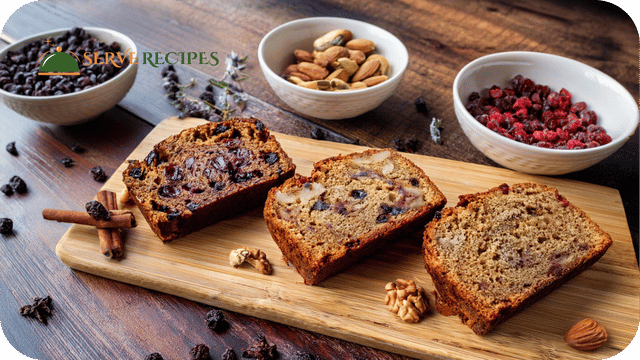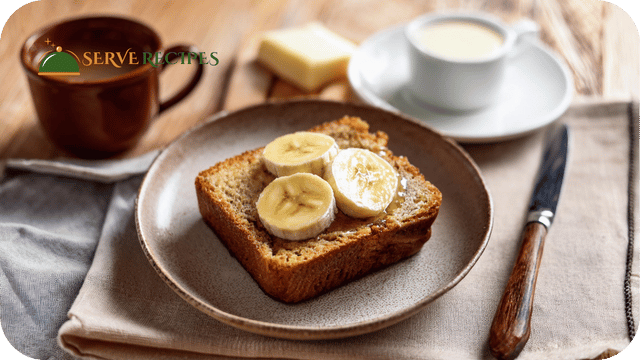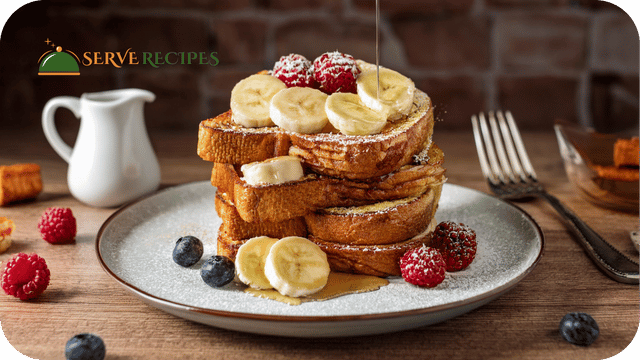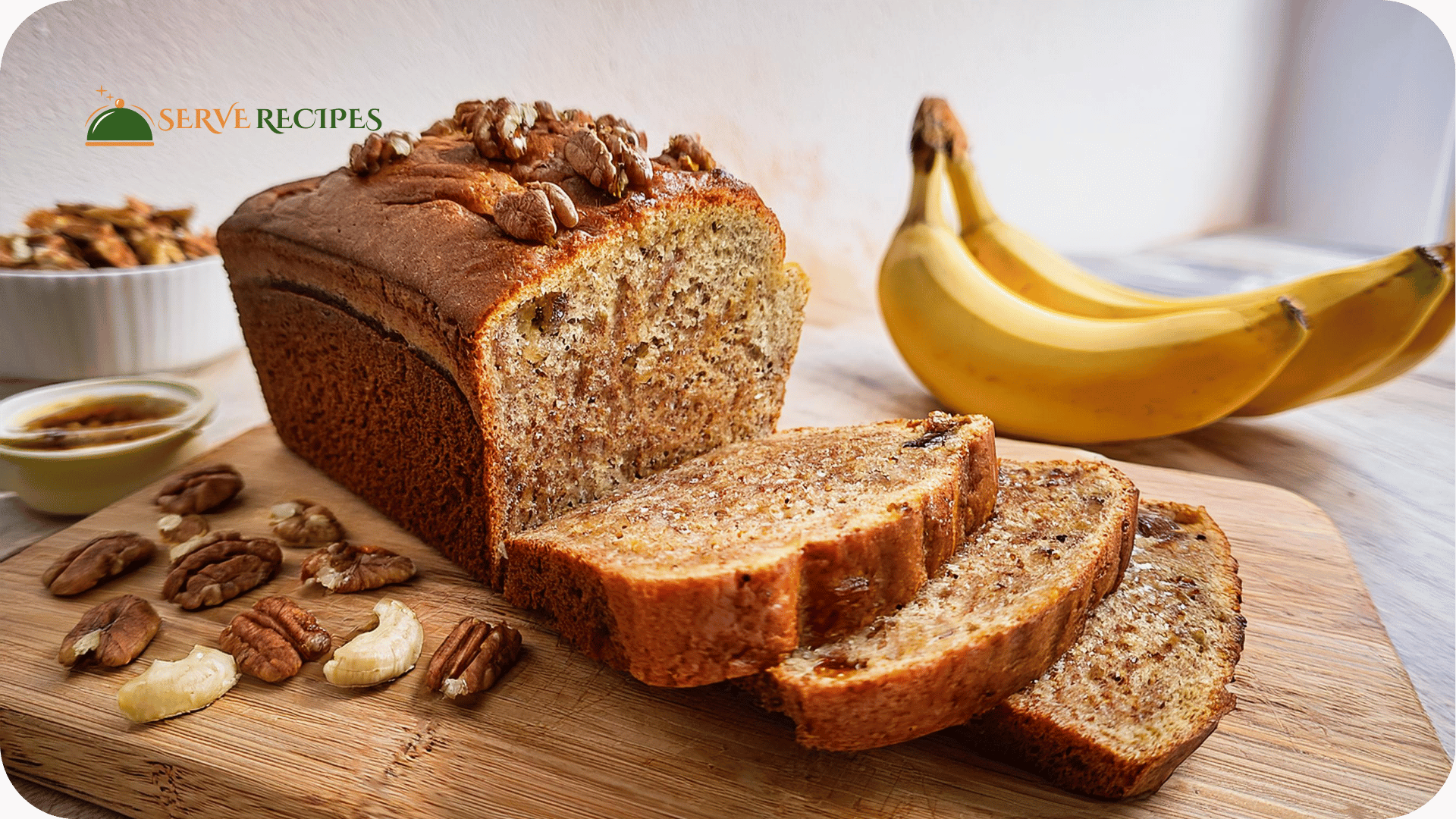Table of Contents
Introduction
Many home bakers have particular fondness for the ageless classic known as banana nut bread. It’s a delicious treat with its rich flavor, soft crumb, and wonderful crunch of nuts. A wonderful banana nut bread depends on creating a recipe that guarantees every mouthful of moisture and outstanding taste. We will walk you through the process in this tutorial to produce the best banana nut bread recipe—one likely to become a mainstay in your baking cabinet.
The History and Popularity of Banana Nut Bread
In its most basic form, banana bread has been a favorite treat for decades. Its beginnings are in the Great Depression, when creative home bakers discovered uses for overripe bananas instead of allowing them to go to waste. The recipe changed over time as nuts added more texture and taste, improving it. Banana nut bread is a house favorite today, eaten as a dessert, a quick breakfast, or a warming snack.
Explore the fascinating history of banana bread to learn more about how this beloved treat came to be.
Choosing the Right Bananas
Using the ripest bananas you can find is the secret to moist banana nut bread. Bananas become sweeter and softer as they ripen because their starch converts to sugar, making them perfect for baking.
- Look for bananas that have a lot of spots or are completely browning. A riper banana will contribute more moisture and flavor to your bread.
- If your bananas are not ripe enough, you can hasten the process by brown paper bag or oven baking for 15 to 20 minutes at 300°F until the skins darken. Learn more tips for ripening bananas quickly.
- If you have overripe bananas you are not ready to use, freeze them for later. Frozen bananas are easy to defrost just before use, making them ideal for banana bread.
Selecting the Best Nuts
The nuts you use can significantly alter the flavor and texture of your banana nut bread.
- Walnuts are the most commonly used nuts because they have a buttery taste that complements bananas. Peecans are an excellent substitute, as they have a slightly sweeter and more delicate crunch.
- Toasting the nuts before adding them to the batter could help to provide more depth of taste. Arrange the nuts on a baking sheet and, with occasional tossing, toast them in the oven at 350°F for five to ten minutes.
- Chop the nuts to a medium consistency—too fine, they would vanish into the batter; too huge, they could overwhelm the bread.
Key Ingredients for a Perfect Banana Nut Bread
Making the ideal banana nut bread begins with choosing the proper components. Achieving the intended texture and taste depends on each element in significant importance.
Ingredients:
- 3 ripe bananas
- 1/3 cup melted butter (or oil)
- 3/4 cup granulated sugar
- 1 large egg, beaten
- 1 teaspoon vanilla extract
- 1 teaspoon baking soda
- Pinch of salt
- 1 1/2 cups all-purpose flour
- 1/2 cup chopped walnuts or pecans (toasted if desired)
- Optional: 1/2 teaspoon cinnamon or nutmeg for added flavor
These elements form the basis of a moist and delicious banana nut bread that you should prepare repeatedly.
Step-by-Step Guide to Making Moist and Delicious Banana Nut Bread
Use this exacting step-by-step instruction to produce consistently moist, delicious, precisely cooked banana nut bread.
- Prepping the Ingredients: Sort all of your ingredients first, then prepare your oven to 350°F (175°C). Parchment paper will help you line a 9×5-inch loaf pan or liner.
- Mixing Wet Ingredients: Mash the ripe bananas in a big mixing dish with a potato masher or fork. Add sugar, eggs, melted butter or oil, and vanilla essence. Mix until thoroughly blended.
- Combining Dry Ingredients: Whisk flour, baking soda, and salt in another bowl. If you’re adding spices, mix them in at this point.
- Bringing It All Together: Add the dry ingredients gradually to the wet ones, stirring softly until just mixed. Try not to overmix the batter; this will produce dense bread. Fold in the chopped nuts.
- Baking: Smooth the top and transfer the batter into the prepared loaf pan. Bake for 60 to 70 minutes, until a toothpick inserted into the center comes out clean. If the bread is browning too quickly, cover it with aluminum foil halfway through baking.
- Cooling: Let the bread to a wire rack to cool totally, let it cool in the pan for ten minutes. This stage guarantees correct bread setting and prevents soggyness.
Nutrition Facts
220
Calories
10g
Fat
30g
Carbs
4g
Protein
Nutrition Facts
Servings: 2
| Amount per bread | |
|---|---|
| Calories | 220 |
| Total Fat 10g | 15% |
| Saturated Fat 3g | 15% |
| Cholesterol 35mg | 12% |
| Sodium 180mg | 8% |
| Total Carbohydrate 30g | 10% |
| Dietary Fiber 2g | 8% |
| Total Sugars 15g | |
| Protein 4g | |
| Vitamin C 6mg | 10% |
| Calcium 20mg | 2% |
| Iron 1mg | 6% |
| Potassium 160mg | 4% |
*The % Daily Value (DV) tells you how much a nutrient in a food serving contributes to a daily diet. 2,000 calories a day is used for general nutrition advice.
Common Mistakes to Avoid
A few typical blunders can produce less-than-perfect banana nut bread even with a fantastic recipe.
- Overmixing: Too much stirring of the mixture may develop the gluten in the flour, producing a tough and dense bread. Just mix until the components come together.
- Wrong Pan Size: The size pan you use will determine the bread’s texture and baking time. Most banana bread recipes call for a 9×5-inch loaf pan.
- Incorrect Baking Temperature: Ensure that you have properly preheated your oven and maintain a consistent temperature throughout the baking process. Both high and low temperatures can cause the bread to bake unevenly.
- Not Cooling Properly: Too long cooling of the bread in the pan can result in a soggy bottom. After ten minutes, move it to a wire rack to cool totally.
Variations on the Classic Banana Nut Bread Recipe
Try these alternatives to personalize the traditional banana nut bread if you’re feeling creative.
- Spices: Your banana bread’s flavor will get warmth and complexity from adding cinnamon, nutmeg, or spices.
- Chocolate Chips: Fold some chocolate chips with the nuts for a sweeter variation. Bananas, almonds, and chocolate taken together are just enticing.
- Dried Fruit: The bread can get a chewy texture and extra sweetness from raisins, cranberries, or chopped dates.
- Healthier Options: For a lighter variation, think about cutting the sugar, using Greek yogurt rather than butter, or replacing half of the all-purpose flour with whole wheat flour. You may also like our Healthy Banana Bread Recipe: Guilt-Free Indulgence.

Serving Suggestions
Extremely flexible and relished in many different ways is banana nut bread.
- Warm with Butter: Serve a slice warm with a pat of butter for a comforting and indulgent treat.

- With Beverages: Pair it with a cup of coffee or tea for a perfect afternoon snack.

- Creative Uses for Leftovers: If you have leftover bread, consider using it to make banana bread French toast or a decadent bread pudding.

Storing and Freezing Tips
Use these storing and freezing guidelines to keep your banana nut bread fresh and appetising.
- Storing: Store banana nut bread in an airtight container at room temperature for up to 3 days. For longer storage, refrigerate it for up to a week.
- Freezing: Banana nut bread freezes beautifully. Wrap the loaf or individual slices tightly in plastic wrap, then in aluminum foil, and store them in a freezer-safe bag for up to 3 months.
- Thawing and Reheating: To thaw, leave the bread at room temperature for a few hours or overnight in the refrigerator. Reheat slices in the microwave or toaster oven before serving.
Health Benefits of Banana Nut Bread
While banana nut bread is undoubtedly enjoyable, its nutritional value varies depending on the ingredients used.
- Nutritional Benefits: Rich in potassium, vitamin B6, and fiber—which help digestion and heart health—bananas also have healthy fats, proteins, and antioxidants abound in nuts, including walnuts and pecans.
- Comparing Traditional vs. Healthy Versions: Although traditional banana nut bread can be heavy in sugar and fat, you can enjoy a healthy version without compromising taste by making a few tweaks—such as lowering sugar or using whole wheat flour.
- Making It Healthier: To cut the fat, substitute honey or maple syrup for refined sugar and replace butter with coconut oil or applesauce.
Frequently Asked Questions (FAQs)
How do I make my banana nut bread more moist?
Use extremely ripe bananas, toss some yogurt or sour cream into the batter, and try not to overmix the ingredients to guarantee your banana nut bread is moist.
Can I substitute nuts with something else?
Indeed, if you dislike nuts or have allergies, you may substitute chocolate chips, dried fruit, or even sunflower or pumpkin seeds.
How long does banana nut bread last?
Banana nut bread keeps reasonably for three days at room temperature. When refrigerated, it lasts up to a week, and when frozen, it lasts up to three months.
Conclusion
Making the ideal banana nut bread recipe mostly depends on avoiding frequent errors, applying correct methods, and utilizing the correct ingredients. This book offers all the advice you need to make a moist, flavorful, absolutely wonderful loaf regardless of your level of experience with baking. You should not hesitate to try several variations or try our Healthy Banana Bread Recipe: Guilt-Free Indulgence for a lighter option. Happy baking!
Call to Action
Are you ready to try this perfect banana nut bread recipe? Once you have your ripe bananas and preferred nuts, start baking. In the comments below, share your findings or any artistic deviations you have created. We would be delighted to hear how it goes.
